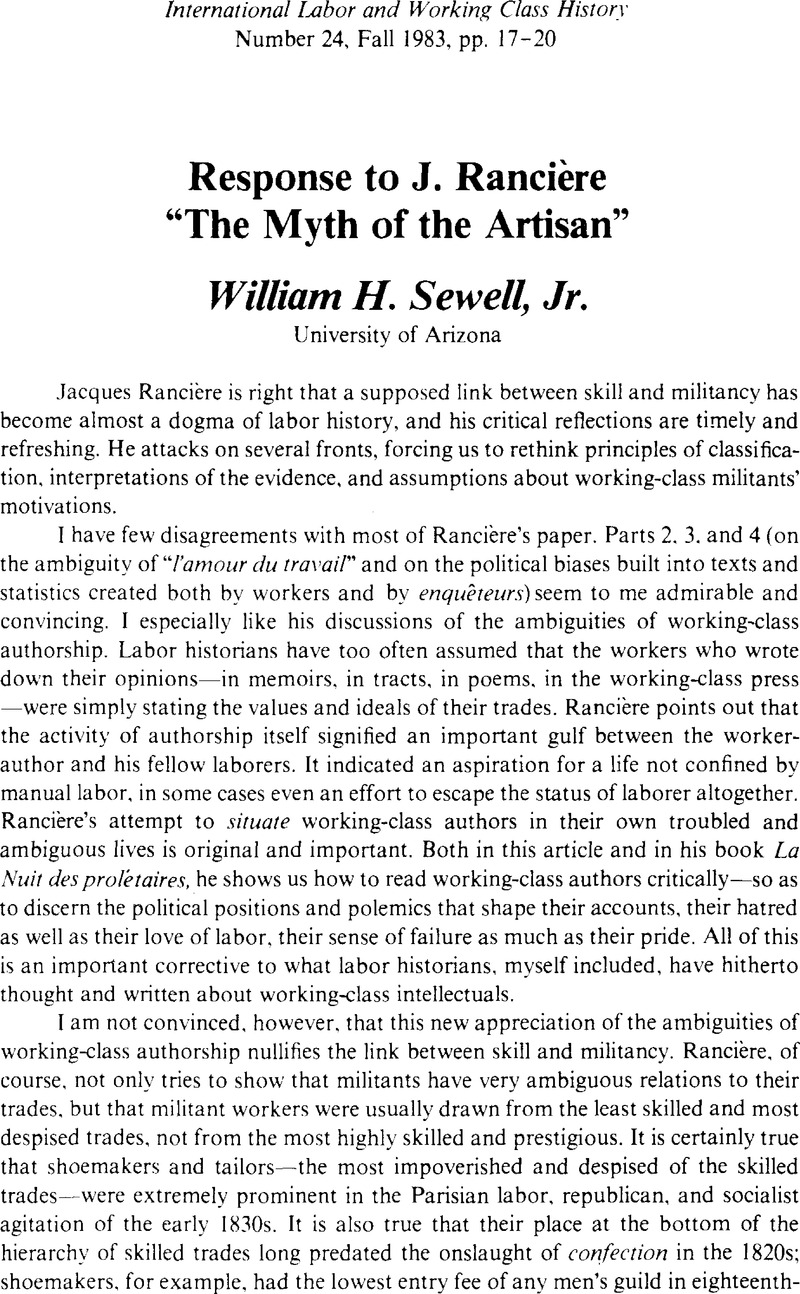Article contents
Response to J. Rancière “The Myth of the Artisan”
Published online by Cambridge University Press: 16 December 2008
Abstract

- Type
- Scholarly Controversis
- Information
- Copyright
- Copyright © International Labor and Working-Class History, Inc. 1983
References
NOTES
1. Saint-Léon, Etienne Martin, Histoire des corporations de métiers, depuis leurs origines jusqu'à leur suppression en 1791 (Paris. 1906), 590–3Google Scholar.
2. Truant, Cynthia. “Compagnonnage: Symbolic Action and Defense of Workers' Rights in France, 1700–1848” (Ph.D. dissertation. University of Chicago. 1978)Google Scholar.
3. Tilly, Charles and Lees, Lynn. “Le Peuple de Juin 1848.” Annales: Economies, sociétés, civilisations 29 (September–October 1974), 1076–7CrossRefGoogle Scholar.
4. Sewell, William H. Jr., “La Classe ouvrière de Marseille sous la Seconde Rèpublique: Structure sociale et comportement politique,” Le Mouvement social 76 (July–september 1971), 64–5Google Scholar. An English translation is “The Working Class of Marseille under the Second Republic: Social Structure and Political Behavior,” in Workers in the Industrial Revolution: Recent Studies of Labor in the United States and Europe, ed. by Stearns, Peter N. and Walkowitz, Daniel J. (New Brunswick, N.J., 1974), 115–6Google Scholar.
- 2
- Cited by




